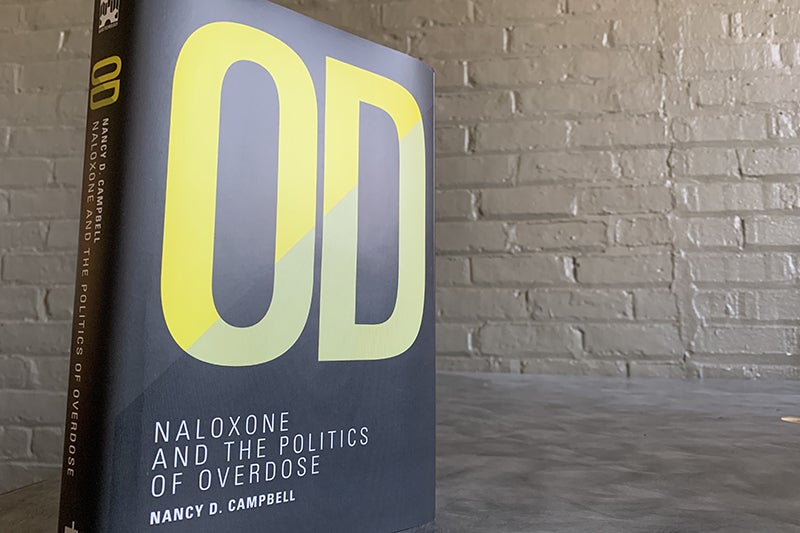According to the Centers for Disease Control and Prevention, an average of 130 Americans die from opioid overdose every day. In the last decade, naloxone, a drug used to rapidly reverse the effects of opioid overdose, gained popularity as a harm reduction approach to a growing epidemic. The use of naloxone and its prevalence in society has become controversial as more and more people are being trained to administer the drug regardless of whether or not they have a medical profession.
Nancy Campbell, a historian who focuses on drugs and drug policy, and head of the Department of Science and Technology Studies at Rensselaer Polytechnic Institute, recently released a new book, OD: Naloxone and the Politics of Overdose, which explores the history of drug overdose as well as the emergence of naloxone as a possible solution to the opioid overdose crisis taking place in our nation today. Following is an excerpt:
Overdose is not a contagious, infectious, chronic disease. Nor is it a natural disaster. It is a human-made disaster exacerbated by denial and disavowal of responsibility by those who structured and maintained distinctions between legal and illegal drugs, “patients” and “addicts,” and physiological and existential pain. Those responsible are not simply pharmaceutical executives — they are policymakers and well-meaning clinicians, regulators and treatment providers, prison guards and administrators. Neither overdose nor its remedy is simple or straightforward. The history of the science of overdose is not just one of molecular agonists and antagonists, but of social antagonisms and political-economic agonistics. Although the agonistics of overdose are typically reduced to risk factors, risky environments, individual behavior, emergency response times, or the lumbering dynamics of health care systems, they reflect complex social and material conditions local to situations where they unfold. Knowing these well enough to design and build workable solutions that save lives has not been easy, and may even deserve portrayal as heroic, but it also requires that many of us give up the idea that we are innocent of this society-wide travesty if we are to build more livable worlds.
Naloxone encapsulates many questions about interactions between science and its publics. This book records a saga from the conceptualization of naloxone as a techno-fix to its current status as a harm reduction commodity. Naloxone may save lives but — like any commodity — is limited in its capacity for changing lives or building more livable worlds. One of the protagonists, Stephen Mallow, viewed it as a “sad indictment of our times [that] countries like yours or mine … cannot get past the war on drugs, the war on people that use drugs. Naloxone is driven by a continuation of the drug war that necessitates people needing access to life-saving interventions. So it’s a sad indictment, yet at the same time I’m hopeful as a result of more corporate entities and state interests spending money, that you do end up with hopefully less lives lost unnecessarily. But it’s an uncomfortable place to exist, if I’m honest. It shouldn’t be the case that our ambition is to offer the antidote when we could actually reduce the numbers by changing our policies, by changing some legislation.”
Naloxone has had multiple social lives. As such it encapsulates contradictory meanings and generates intense ambivalence. It promises an uncomfortable redemption, beckoning toward lives unnecessarily lost, and imparting hope that they might be found. But it is not an antidote that can heal — all it can do is give us a bit of breathing room and another chance to get it together. Perhaps we can use it to enable the reconsideration of the people, places, and things that have been hurt by the war on drugs and the war on drug users.





